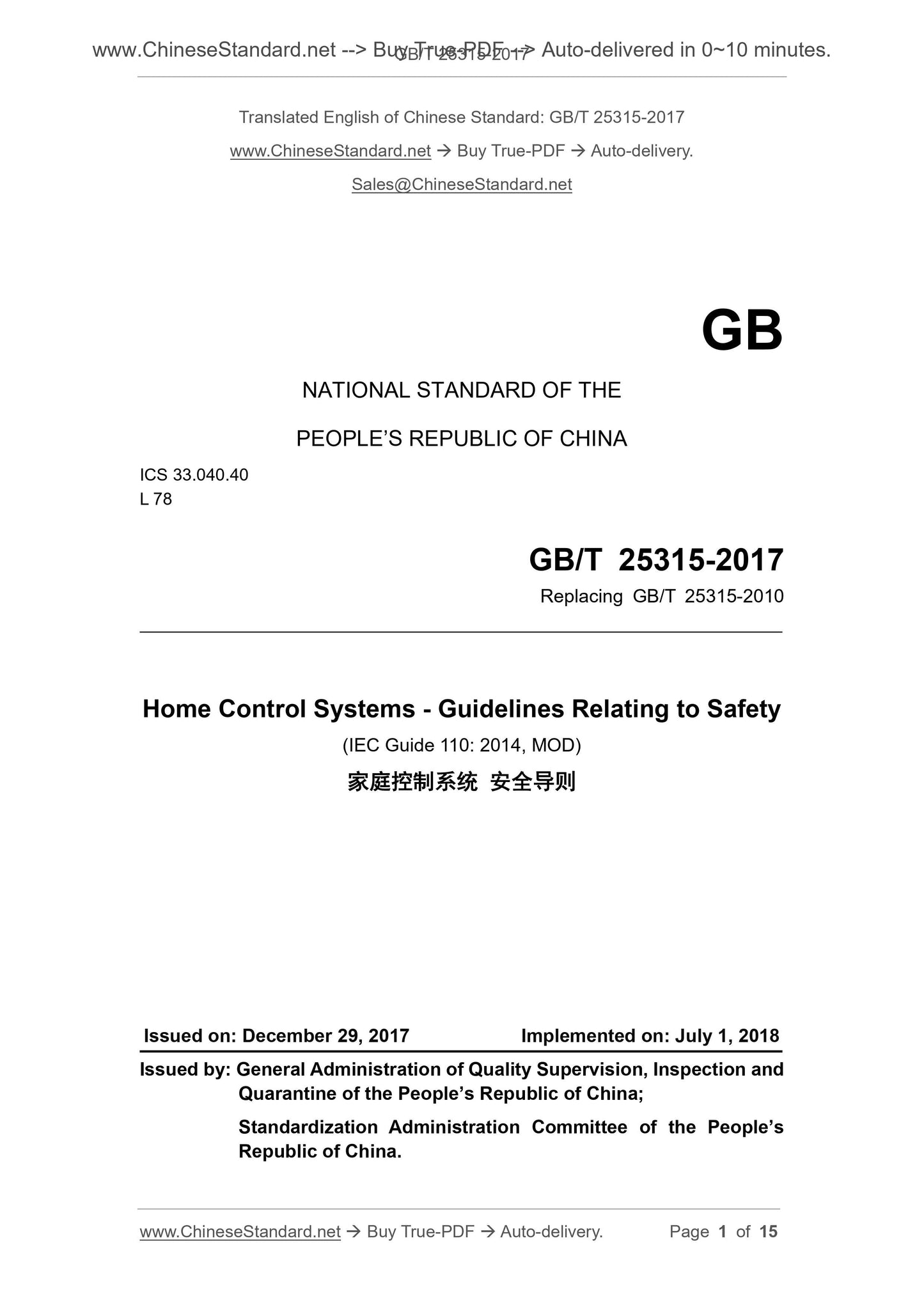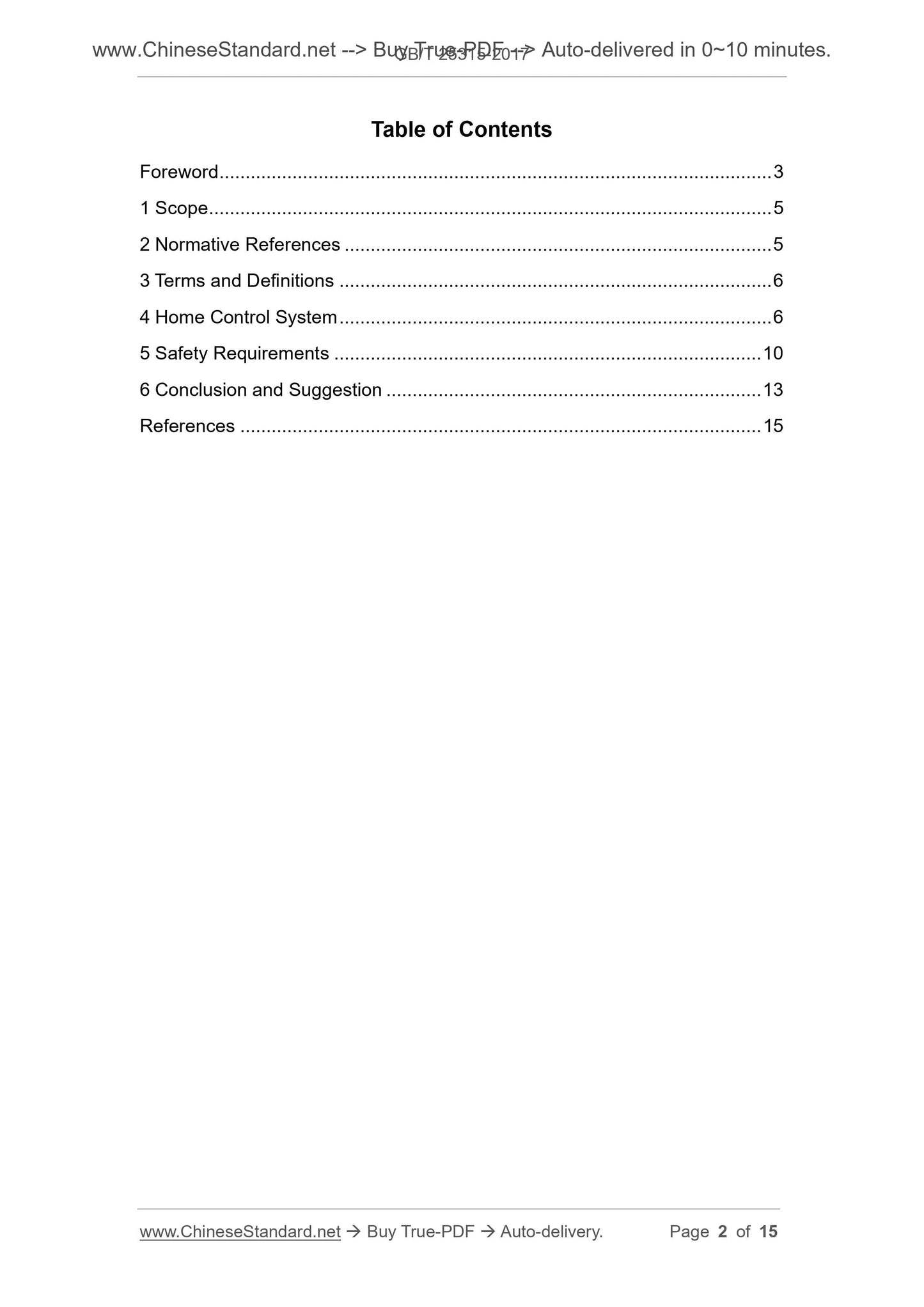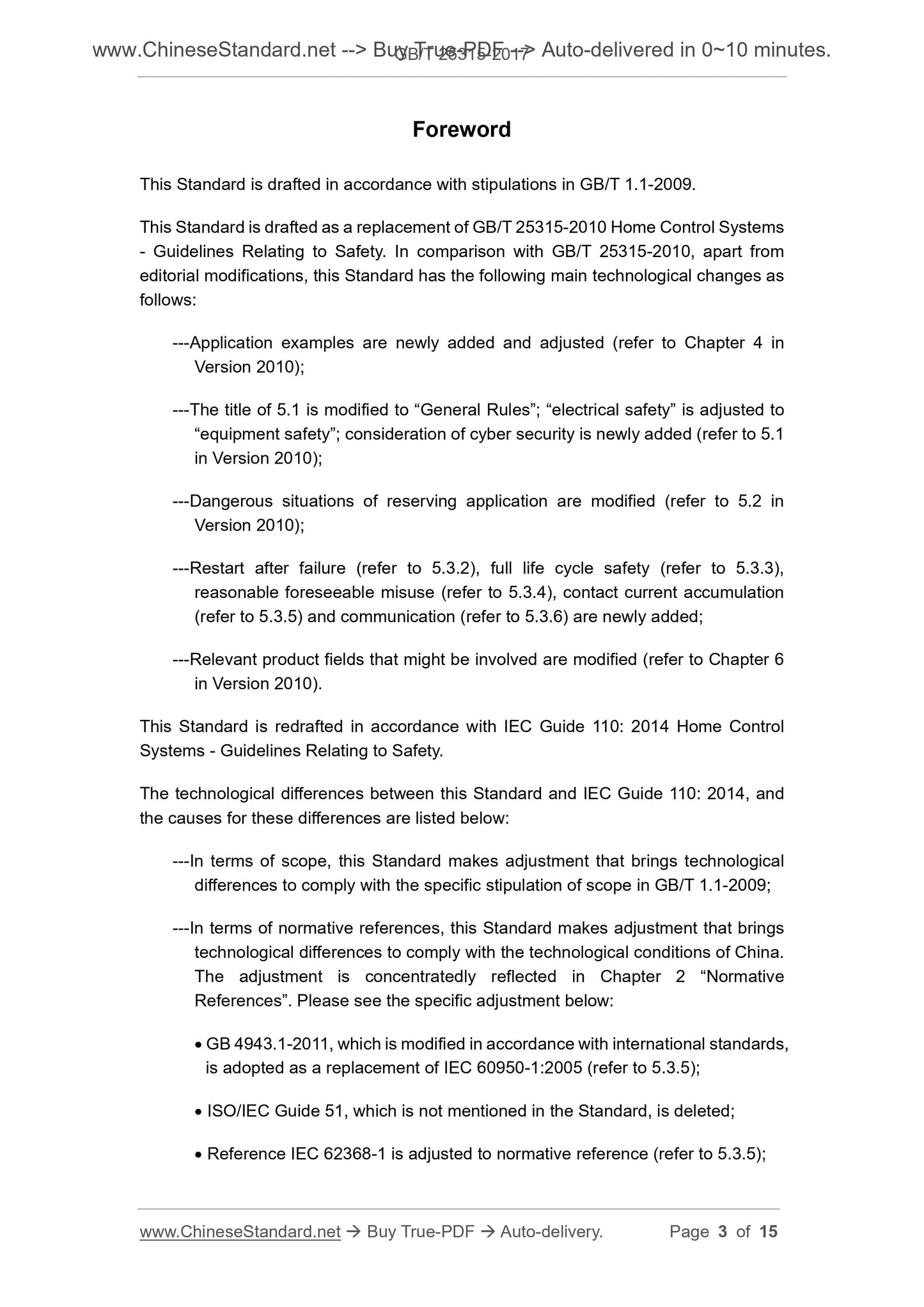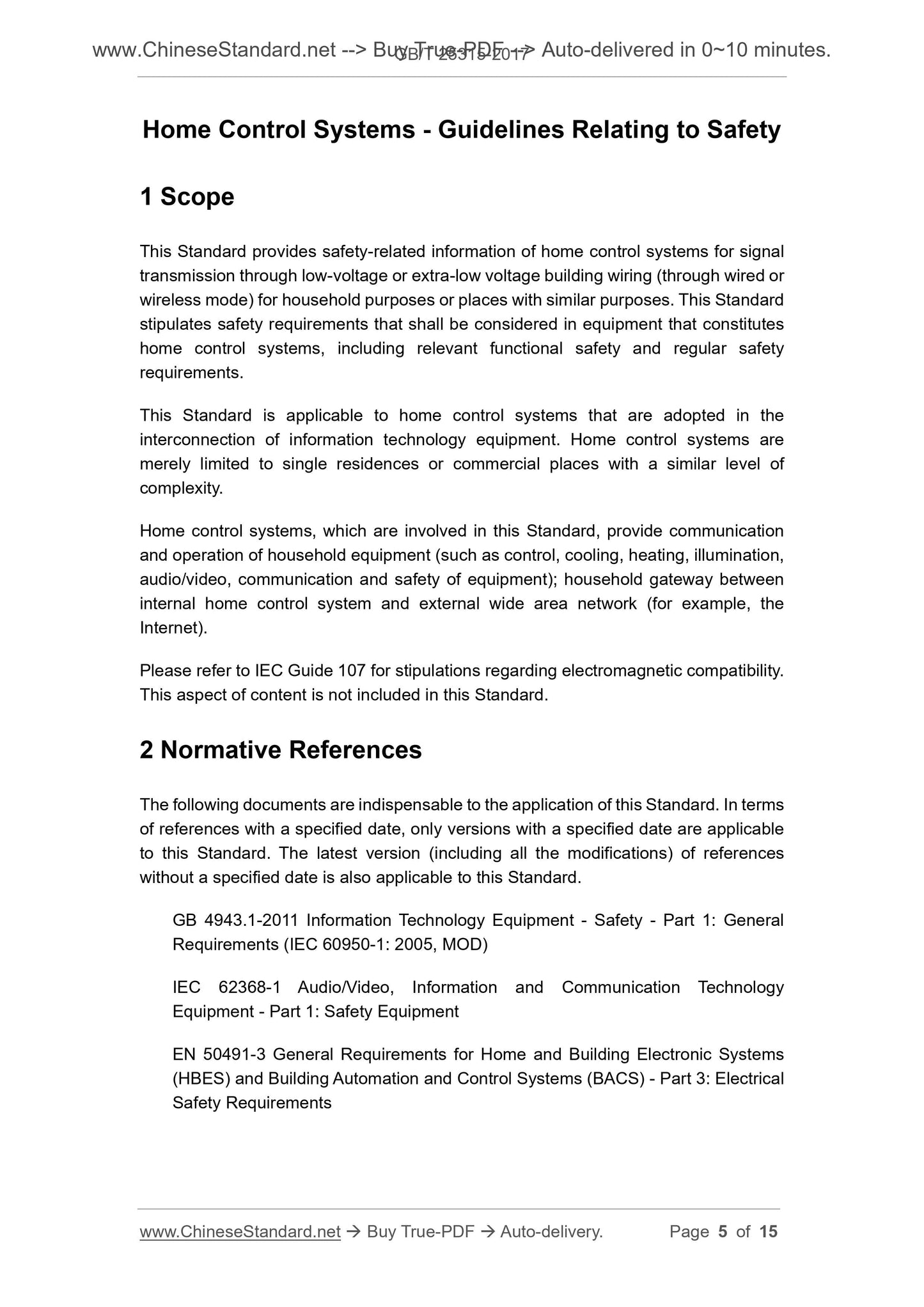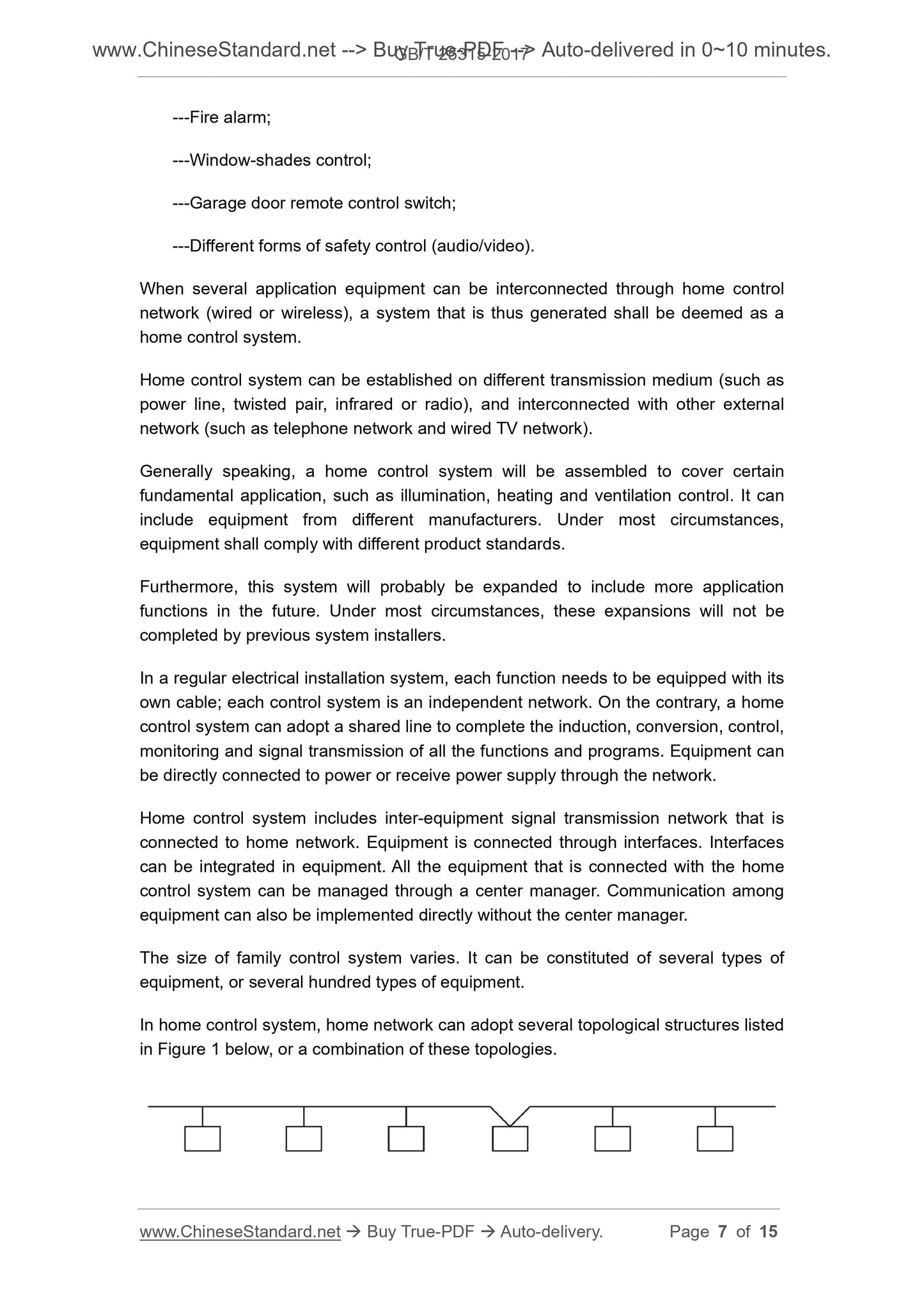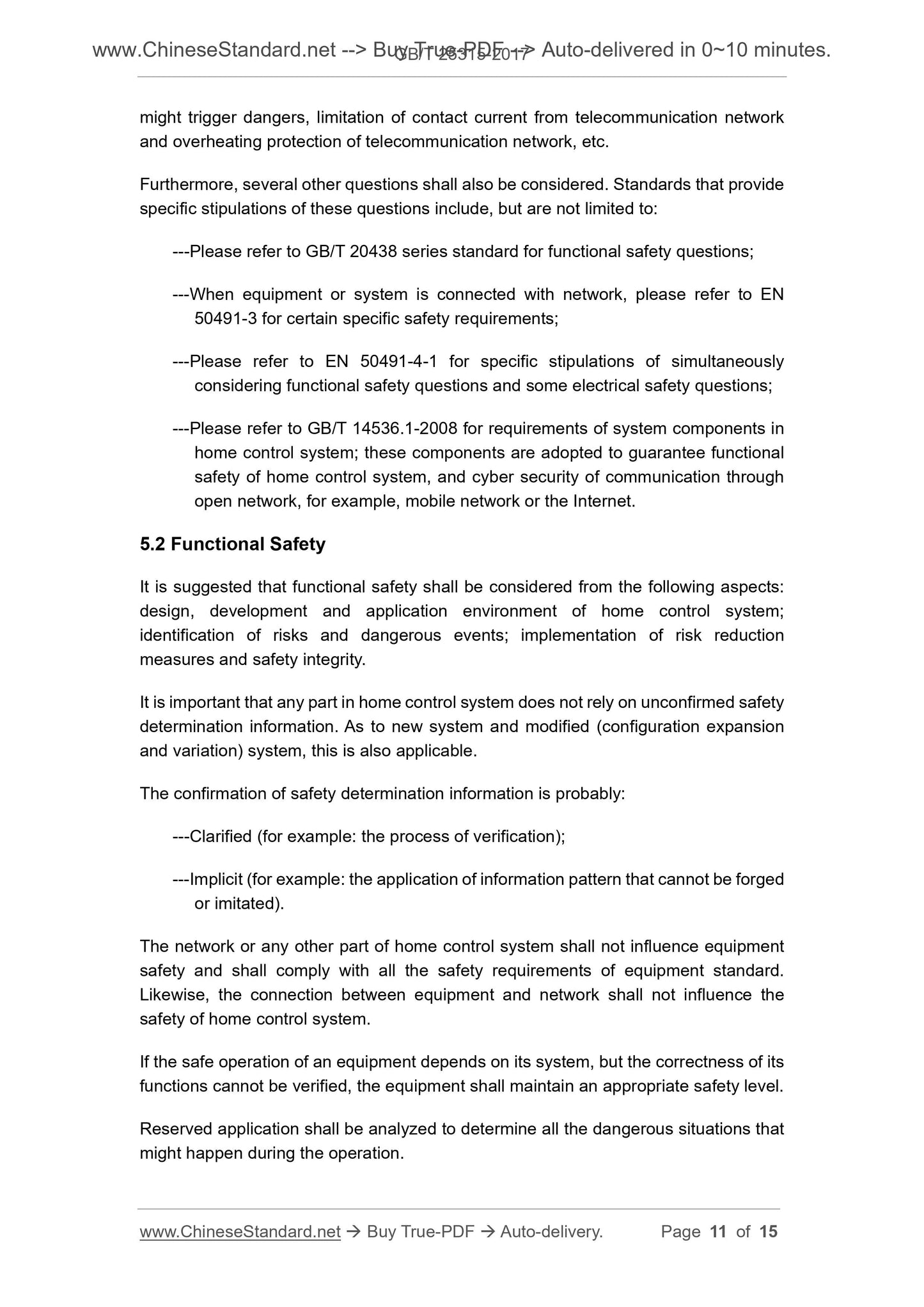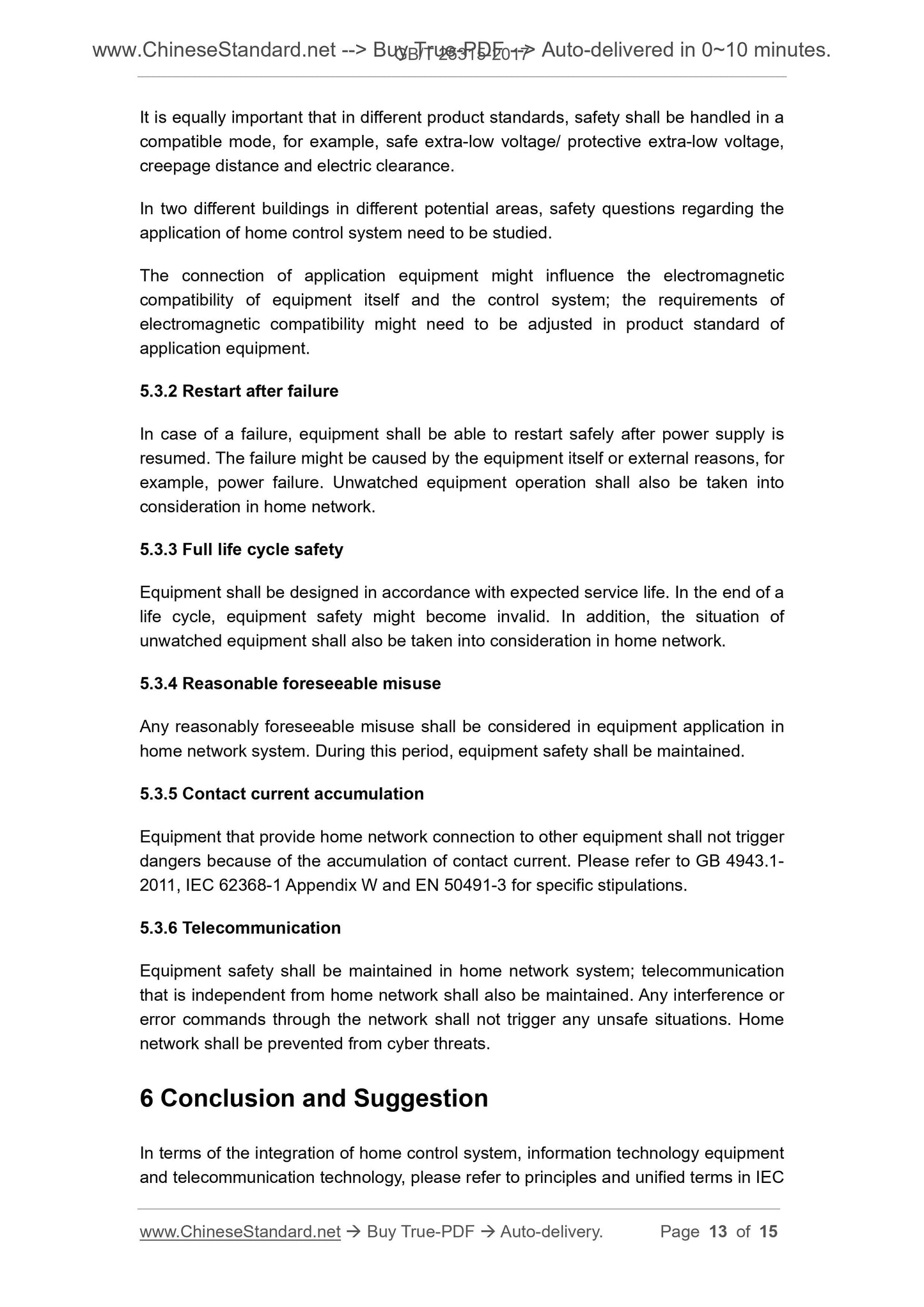1
/
of
7
www.ChineseStandard.us -- Field Test Asia Pte. Ltd.
GB/T 25315-2017 English PDF (GB/T25315-2017)
GB/T 25315-2017 English PDF (GB/T25315-2017)
Regular price
$150.00
Regular price
Sale price
$150.00
Unit price
/
per
Shipping calculated at checkout.
Couldn't load pickup availability
GB/T 25315-2017: Home control systems -- Guidelines relating to safety
Delivery: 9 seconds. Download (and Email) true-PDF + Invoice.Get Quotation: Click GB/T 25315-2017 (Self-service in 1-minute)
Newer / historical versions: GB/T 25315-2017
Preview True-PDF
Scope
This Standard provides safety-related information of home control systems for signaltransmission through low-voltage or extra-low voltage building wiring (through wired or
wireless mode) for household purposes or places with similar purposes. This Standard
stipulates safety requirements that shall be considered in equipment that constitutes
home control systems, including relevant functional safety and regular safety
requirements.
This Standard is applicable to home control systems that are adopted in the
interconnection of information technology equipment. Home control systems are
merely limited to single residences or commercial places with a similar level of
complexity.
Home control systems, which are involved in this Standard, provide communication
and operation of household equipment (such as control, cooling, heating, illumination,
audio/video, communication and safety of equipment); household gateway between
internal home control system and external wide area network (for example, the
Internet).
Please refer to IEC Guide 107 for stipulations regarding electromagnetic compatibility.
This aspect of content is not included in this Standard.
Basic Data
| Standard ID | GB/T 25315-2017 (GB/T25315-2017) |
| Description (Translated English) | Home control systems -- Guidelines relating to safety |
| Sector / Industry | National Standard (Recommended) |
| Classification of Chinese Standard | L78 |
| Classification of International Standard | 33.040.40 |
| Word Count Estimation | 10,133 |
| Date of Issue | 2017-12-29 |
| Date of Implementation | 2018-07-01 |
| Older Standard (superseded by this standard) | GB/T 25315-2010 |
| Regulation (derived from) | National Standards Bulletin 2017 No. 32 |
| Issuing agency(ies) | General Administration of Quality Supervision, Inspection and Quarantine of the People's Republic of China, Standardization Administration of the People's Republic of China |
Share
